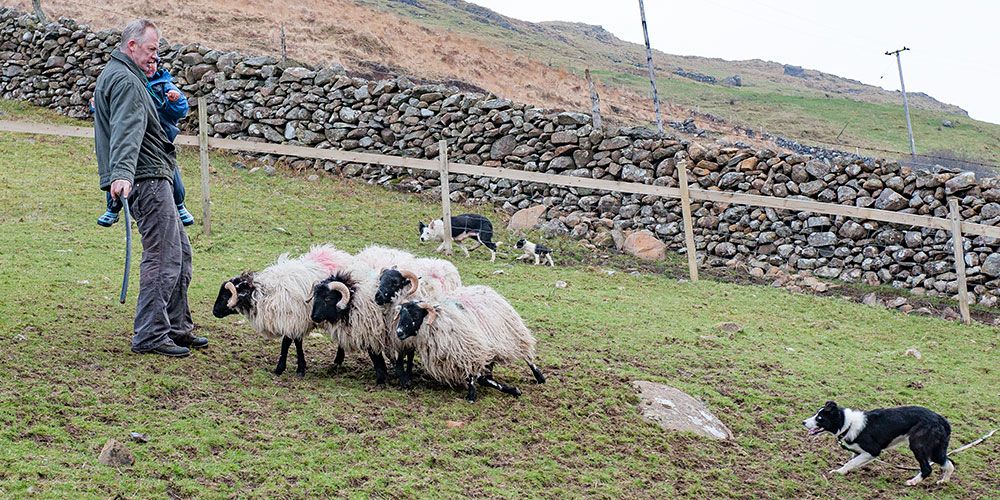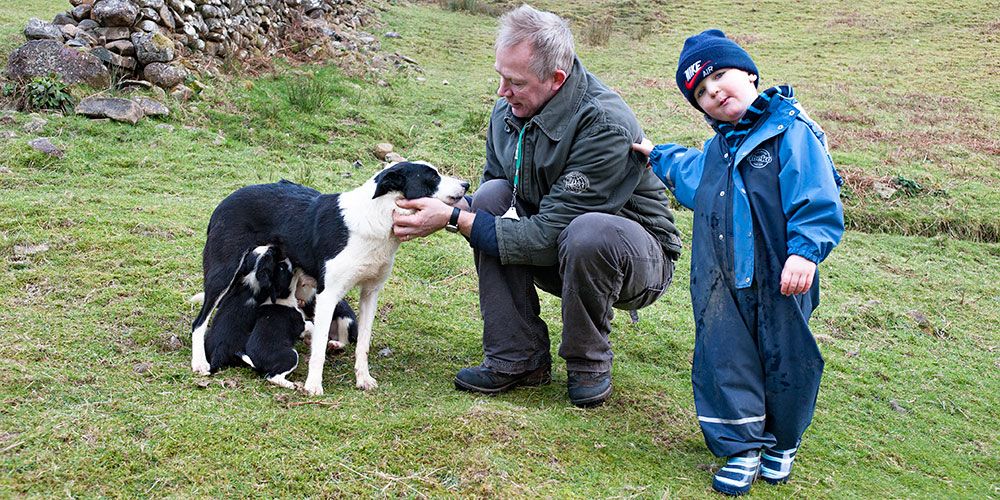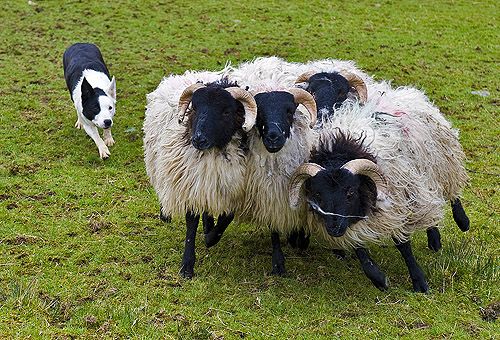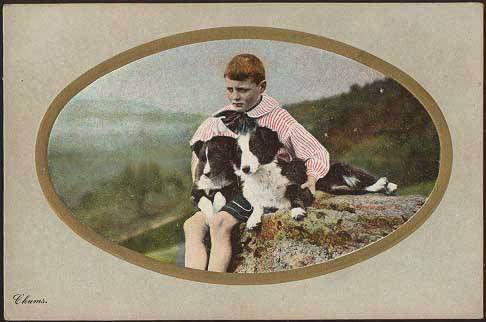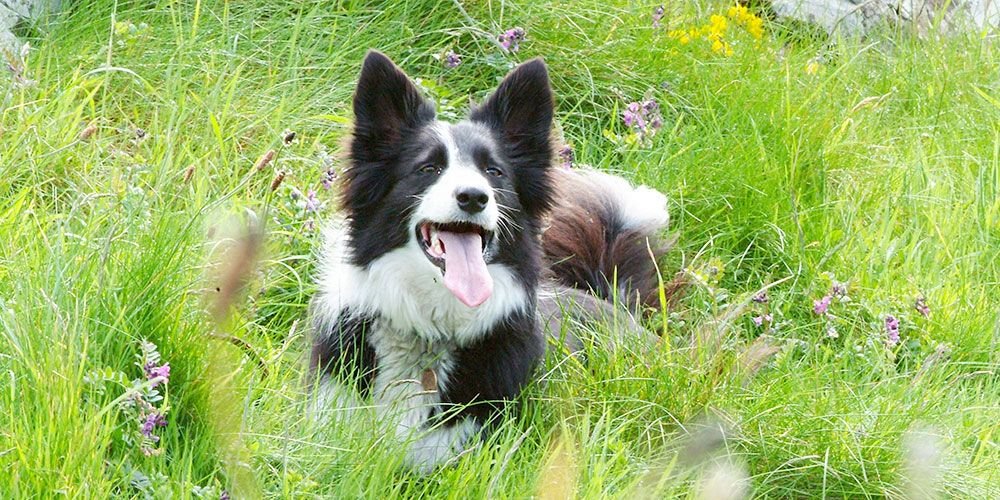
The Border Collie
Looking at the green fields of Connemara dotted with sheep, cows, and horses in peaceful though crowded coexistence, one wonders how it is possible to gather all these animals when there is a need to: the solution is to rely on a widespread breed of dogs, i.e. the Border Collie. This breed of shepherd dogs is universally recognized as the world's smartest one, just behind the Poodle. Named a "workaholic" for its sheer drive and love for working, the Border Collie has "an eye" that can hypnotize cattle; actually, this dog can master any type of herd by crouching down and mesmerizing the animals with its intense stare.
The name comes from the place of origin of these dogs, on the boundary between England and Scotland. The breed is actually very ancient, but the genetic selection was quite natural and scarcely influenced by the man so that only in 1976 the English Kennel Club has officially recognized it. There are two coat varieties: a short, sleek coat (about 2.5 cm long) and a coarse, rough coat (about 7.6 cm long). The coat colours come in black and white, tricolour, red and white, black and gray, yellow, yellow and white, sable, and all black. The longer haired variety should have a mane and tail brush. The Border Collie is a medium size dog: the breed standard requires a height of 53 cm. for males and something less for females. On the whole, this dog is noble and harmonious, yet endowed with exceptional strength and intelligence.
The training can begin at 8-9 months: the young apprentice will learn quickly its tasks watching an adult, experienced dog at work. Physical exercise alone is not sufficient for these very intelligent and highly energetic dogs. They want to work and must do so with body and mind as one, carrying out different tasks. Fast and agile, these lively dogs have boundless energy and thrive on hard work and play. Orders to dogs can be either by voice or using a special whistle called "sheepdog whistle", whose use is rather difficult.
Basic vocal commands are the following :
- Come-bye or just bye - go to the left of the stock, or clockwise around them.
- Away to me, or just away or 'way - go to the right of the stock, or counterclockwise around them.
- Stand - stop, although when said gently may also mean just to slow down.
- Wait, (lie) down or sit - stop.
- Steady or take time - slow down.
- Cast - gather the stock into a group. Good working dogs will cast over a large area.
- Find - search for stock. A good dog will hold the stock until the shepherd arrives. Some will bark when the stock have been located.
- Get out or get back - move away from the stock. Used when the dog is working too close to the stock, potentially causing the stock stress. Occasionally used as a reprimand.
- Hold - keep stock where they are. Bark or speak up - bark at stock. Useful when more force is needed, and usually essential for working cattle and sheep.
- Look back - return for a missed animal. In here - go through a gap in the flock. Used when separating stock.
- Walk up, walk on or just walk - move in closer to the stock.
- That'll do - stop working and return to the handler.
On the website of the International Sheep Dog Society it is possible to find the schedule of all sheep dog trials held in Ireland, UK and worldwide. These competitions made popular by the movie "Babe", gather enthusiasts, farmers and breeders from all the world and represent a lively and engaging opportunity to compare breeding and training methods.
If you are wandering along the banks of lovely Lough Na Fooey - in the heart of Joyce 's Country - do not miss a visit to "Croeso" Border Collie breeding farm. Here Joe Joyce, a sheep and sheepdog breeder, trains his dogs for the hard tasks awaiting them up in the hills.

